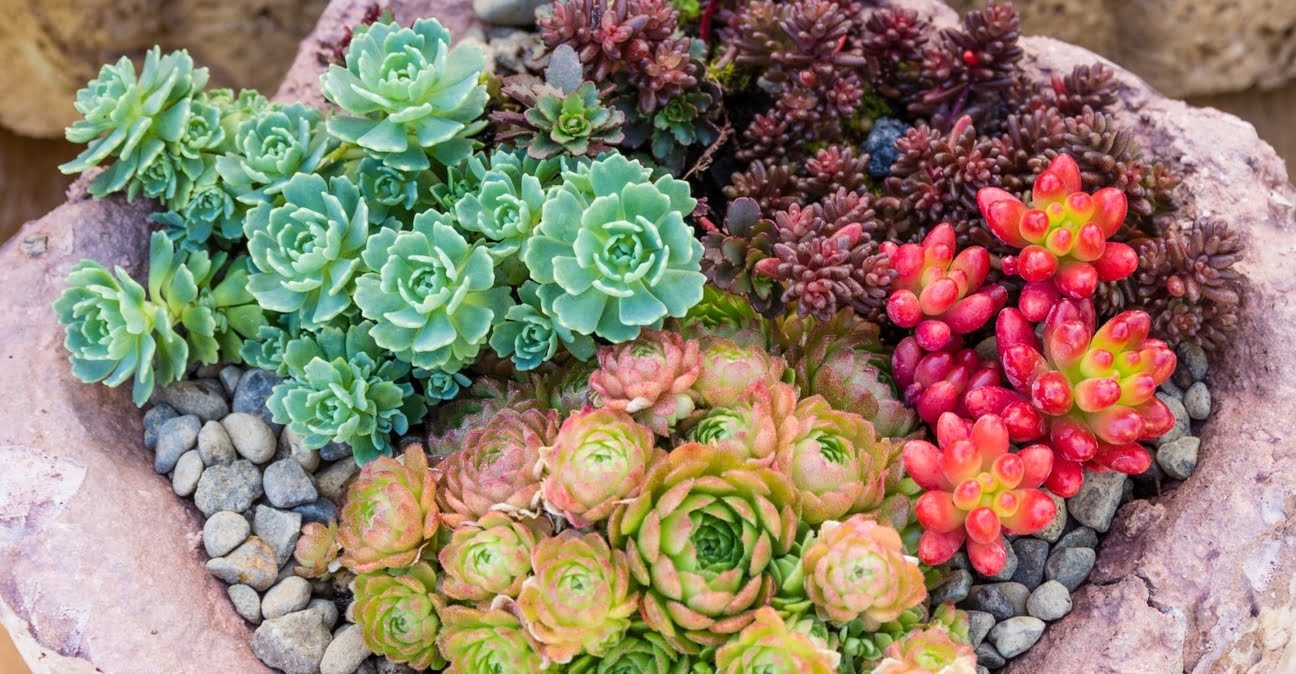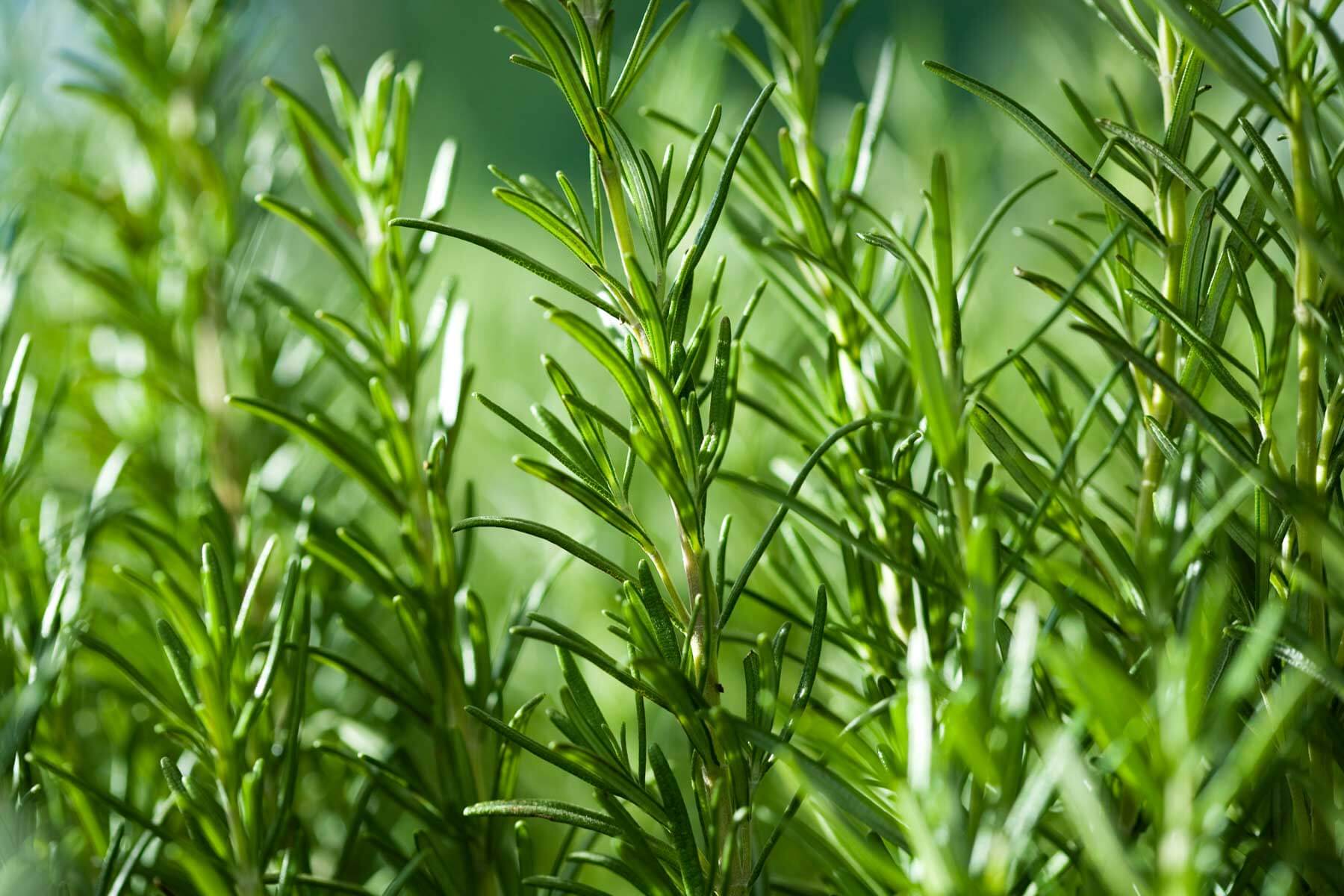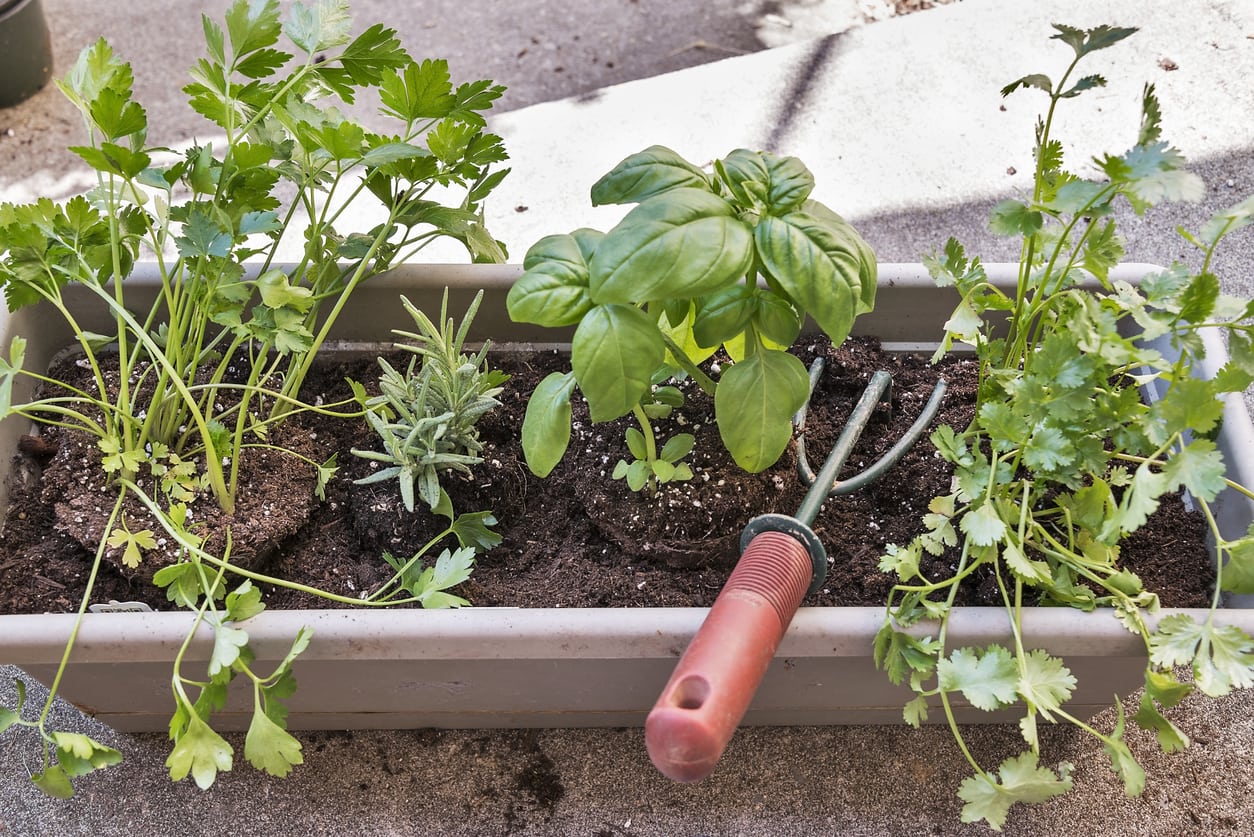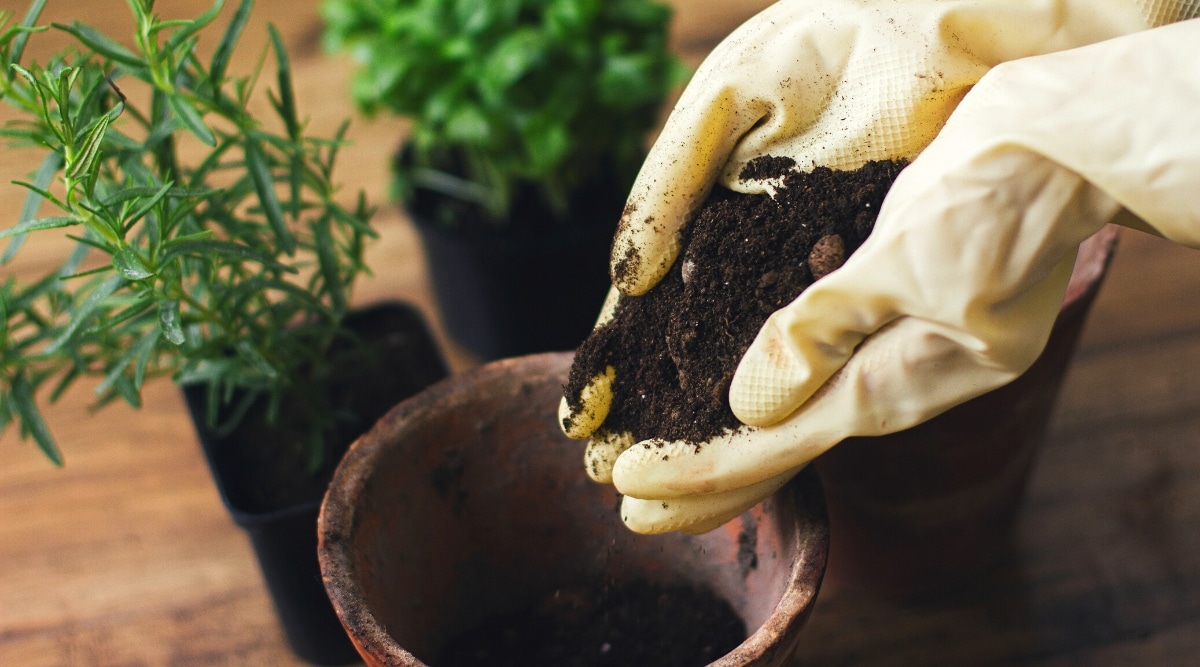Home>Types of Gardening>Edible Gardening>When To Plant Rosemary Outside?


Edible Gardening
When To Plant Rosemary Outside?
Published: January 29, 2024
Learn when to plant rosemary outside for your edible gardening. Discover the best timing and tips for a successful rosemary garden.
(Many of the links in this article redirect to a specific reviewed product. Your purchase of these products through affiliate links helps to generate commission for Chicagolandgardening.com, at no extra cost. Learn more)
Table of Contents
When To Plant Rosemary Outside?
Introduction
Are you a gardening enthusiast ready to embark on your journey of growing your own herbs? If so, you may be wondering when the best time is to plant rosemary outside. Rosemary, with its fragrant leaves and delightful flavor, is a popular herb choice for both culinary and decorative purposes. Whether you plan to use rosemary in your favorite recipes or simply add a touch of Mediterranean charm to your garden, knowing the optimal time for outdoor planting is crucial for the plant’s success.
Rosemary, scientifically known as Rosmarinus officinalis, is a versatile and resilient herb that thrives in warm and mild climates. It is native to the Mediterranean region but can be grown in various other regions with the right care and conditions. When planted in suitable outdoor locations, rosemary can flourish and provide you with a bountiful harvest.
When considering planting rosemary outside, it’s important to understand its growth habits and requirements. Rosemary is an evergreen perennial herb that can reach a height of 2-4 feet and spread up to 3-4 feet. It has woody stems and aromatic needle-like leaves that add both aroma and flavor to your dishes. Additionally, rosemary produces small, delicate flowers in shades of blue, purple, or white, which attract bees and other pollinators.
When To Plant Rosemary Outside?
Understanding Rosemary
Rosemary, with its distinct fragrance and robust flavor, is a beloved herb in the culinary world. But it’s not just its culinary uses that make it popular; rosemary also offers numerous health benefits and has been used for centuries in traditional medicine. Understanding the characteristics of rosemary will help you cultivate a successful garden.
Rosemary belongs to the Lamiaceae family and is botanically known as Rosmarinus officinalis. It is an evergreen perennial herb that is native to the Mediterranean region, where it thrives in full sun and well-drained soil. The plant’s narrow, needle-like leaves are usually dark green on top and silver-gray on the underside, giving rosemary a visually striking appearance.
One of the remarkable features of rosemary is its aromatic properties. When the leaves are touched or crushed, they release a pleasant fragrance that is often described as a mix of pine and citrus. This fragrance makes rosemary a desirable addition to herb gardens, as well as gardens focused on attracting pollinators.
In addition to its culinary uses, rosemary is also known for its medicinal properties. It contains essential oils, such as camphor and cineole, which have anti-inflammatory and antibacterial effects. Rosemary has been used in traditional medicine to alleviate digestive problems, improve memory and concentration, and relieve headaches.
Before embarking on planting rosemary outdoors, it’s crucial to consider the specific variety you want to grow. While there are various cultivars available, the most common ones include ‘Arp,’ ‘Tuscan Blue,’ and ‘Prostrate.’ Each variety differs in growth habit, size, and flavor intensity. Some are more suitable for culinary purposes, while others are better suited for decorative purposes. Take time to research and choose the variety that best meets your gardening goals.
When To Plant Rosemary Outside?
Choosing the Right Location for Outdoor Planting
When it comes to planting rosemary outside, choosing the right location plays a crucial role in the plant’s overall health and growth. Rosemary is a sun-loving herb that requires at least 6-8 hours of direct sunlight each day to thrive. It is important to find a spot in your garden that receives ample sunlight and has well-drained soil.
Look for a location that offers protection against strong winds, as excessive wind can damage the delicate branches of rosemary. On the other hand, good air circulation is essential to prevent fungal diseases. Consider the microclimate of your garden and select a spot that strikes a balance between protection and proper airflow.
Soil quality is another critical factor to consider. Rosemary prefers well-drained soil that is slightly acidic to neutral, with a pH of 6-7. If your garden has heavy clay soil, it is advisable to amend it with organic matter, such as compost or well-rotted manure, to improve drainage and fertility. Sandy or rocky soil can also work well for rosemary, as long as it drains efficiently.
Avoid planting rosemary in areas with standing water or where the soil tends to become waterlogged, as this can lead to root rot and other fungal diseases. Raised beds or containers are good alternatives if your garden lacks well-draining soil. This allows you to control the moisture levels and ensure the plant’s roots do not become saturated.
Consider companion planting when selecting a location for your outdoor rosemary. Companion plants such as thyme, sage, and lavender can not only provide aesthetic benefits but also help repel pests that may be harmful to rosemary. Additionally, the aromatic oils released by rosemary can help deter insects and promote overall plant health.
By choosing the right location for planting rosemary outside, you are providing it with the ideal growing conditions necessary for a successful and thriving herb garden.
When To Plant Rosemary Outside?
Best Time to Plant Rosemary Outside
Timing is crucial when it comes to planting rosemary outdoors. Since rosemary is native to the Mediterranean region, it thrives in warm and mild climates. Planting rosemary when the weather conditions are favorable will give the herb a better chance of establishing itself and thriving in your garden.
The best time to plant rosemary outside is in the spring, after the last frost date has passed. In many regions, this is typically around mid to late spring. Waiting until the threat of frost has diminished ensures that the young plants won’t be damaged by cold temperatures which rosemary is sensitive to.
It’s important to note that rosemary is not frost-tolerant and can suffer significant damage if exposed to freezing temperatures for prolonged periods. Therefore, planting rosemary outside in early spring or during cooler periods should be avoided unless you can provide protection from frost using techniques such as row covers or cloches.
When planting rosemary in the spring, make sure that the soil has warmed up sufficiently, with temperatures consistently above 60°F (15°C). This allows the plant’s roots to establish faster and encourages healthy growth. Cold soil can slow down root development and lead to poor plant vigor.
If you live in a region with mild winters, you may also consider fall planting. In areas where winters are mild and frost is rare, planting rosemary in late summer or early fall allows the herb to establish a strong root system before winter arrives. However, be cautious if your region experiences freezing temperatures during winter, as proper protection may be necessary.
By planting rosemary at the right time, you are setting the stage for a successful and productive herb garden. Remember to consider your specific climate and choose a planting time that aligns with the optimal conditions for rosemary.
When To Plant Rosemary Outside?
Preparing the Soil for Rosemary
Preparing the soil for rosemary is a crucial step in ensuring the herb’s successful growth and development. Rosemary thrives in well-drained soil with good fertility and a slightly acidic to neutral pH level. Here are some steps to prepare the soil for planting rosemary outdoors:
- Test the soil: Start by testing the soil’s pH level. Rosemary prefers a pH range of 6-7. If your soil is too alkaline, with a higher pH, you may need to amend it to create a more suitable environment for the herb. Adding organic matter, such as compost or peat moss, can help lower the soil pH.
- Improve drainage: Rosemary is susceptible to root rot in poorly drained soil. If your garden has heavy clay soil, consider improving drainage by adding organic matter, such as compost or well-rotted manure. This will help loosen the soil and improve its ability to drain excess water.
- Remove weeds and stones: Before planting rosemary, remove any weeds or grass from the planting area. Additionally, clear the area of any stones or debris that may hinder the herb’s growth.
- Loosen the soil: Use a garden fork or tiller to loosen the soil to a depth of about 12 inches (30 cm). This will help provide adequate space for the rosemary roots to spread and establish themselves.
- Add organic matter: Incorporate organic matter, such as compost or well-rotted manure, into the soil. This will enrich the soil with nutrients and improve its overall structure. Work the organic matter into the top few inches of soil.
- Smooth and level the soil: After incorporating organic matter, smooth and level the soil surface using a rake. This will provide a uniform and stable bed for planting rosemary.
Remember, rosemary prefers well-drained soil, so avoid overwatering or allowing the soil to become waterlogged. If necessary, consider planting rosemary in raised beds or containers with well-draining potting mix.
By properly preparing the soil before planting, you are providing rosemary with a nutrient-rich and well-drained environment for optimal growth and development.
When To Plant Rosemary Outside?
Planting Rosemary in the Ground
Once you have prepared the soil, it’s time to plant your rosemary in the ground. Follow these steps to ensure proper planting and give your herb the best chance to thrive:
- Dig a hole: Dig a hole in the prepared soil that is slightly larger and deeper than the plant’s root ball. The hole should be wide enough to accommodate the roots without cramping them.
- Prepare the root ball: Gently loosen the roots of the rosemary plant by lightly massaging them with your fingers. This helps to encourage outward root growth once the plant is in the ground.
- Place the plant: Carefully place the rosemary plant in the hole, ensuring that the top of the root ball is level with or slightly above the soil surface. Avoid burying the plant too deep, as this can lead to root rot.
- Backfill the hole: Fill the hole with the soil mixture, gently firming it around the plant to remove any air pockets. Take care not to compact the soil too much, as rosemary roots need oxygen to thrive.
- Water the plant: After planting, water the rosemary thoroughly to settle the soil around the roots. Ensure that the water reaches the root zone, but avoid overwatering. Rosemary prefers slightly drier conditions.
- Mulch: Apply a layer of organic mulch, such as straw or wood chips, around the plant. This helps retain moisture, suppress weed growth, and regulate soil temperature. Leave a small gap around the base of the plant to prevent moisture accumulation against the stem.
- Label and space: If you’re planting multiple rosemary plants, make sure to label each one for identification. Space the plants 2-3 feet apart to allow for adequate air circulation and future growth.
Remember to regularly water the rosemary plant until it becomes established. Once the plant is well-established, it will require less frequent watering, as rosemary prefers drier conditions.
By following these planting guidelines, you set the foundation for a healthy and productive rosemary plant in your garden.
When To Plant Rosemary Outside?
Caring for Outdoor Rosemary Plants
Once you have planted your rosemary in the ground, it’s important to provide proper care to ensure its health and vitality. Here are some essential tips for caring for outdoor rosemary plants:
- Watering: Rosemary prefers slightly drier conditions, so avoid overwatering. Allow the top few inches of soil to dry out between waterings. When you do water, make sure to do it deeply, providing enough moisture to penetrate the root zone.
- Fertilization: Rosemary is not a heavy feeder and can thrive in moderately fertile soil. Applying a balanced organic fertilizer once or twice during the growing season is usually sufficient. Avoid over-fertilizing, as this can lead to excessive foliage growth at the expense of essential oils and flavor.
- Pruning: Regular pruning helps keep rosemary plants compact and encourages bushier growth. Prune lightly throughout the growing season, focusing on removing dead or damaged branches. Avoid pruning too heavily, as this can stress the plant.
- Pest control: Rosemary is generally resistant to pests and diseases, but occasional pest issues may arise. Monitor your plants regularly for signs of aphids, spider mites, or mealybugs. If necessary, use organic insecticidal soaps or companion planting of insect-repelling herbs to control pest populations.
- Protection from extreme weather: While rosemary is a hardy herb, it may need protection during extreme weather conditions. If temperatures drop significantly or if severe frost is expected, cover your plants with a frost cloth or bring potted plants indoors. This will help prevent frost damage and ensure the plant’s survival.
- Harvesting: You can start harvesting rosemary once the plant has reached a height of about 6-8 inches. Simply snip off the stems as needed, using sharp pruning shears or scissors. Regular harvesting promotes bushier growth and encourages the production of essential oils.
Remember that rosemary is a drought-tolerant plant and performs best in lean conditions. Avoid over-caring for the herb, as this can lead to excessive foliage or decreased flavor intensity.
By providing the appropriate care and attention, you will enjoy a thriving and flavorful outdoor rosemary plant in your garden.
When To Plant Rosemary Outside?
Harvesting and Pruning Rosemary
Harvesting and pruning are essential tasks when it comes to maintaining healthy and productive rosemary plants in your garden. These practices promote bushier growth, manage plant size, and ensure a bountiful harvest of flavorful leaves. Here are some tips for harvesting and pruning rosemary:
- Harvesting: Rosemary can be harvested throughout the growing season once the plant has reached a height of about 6-8 inches. To harvest, simply snip off the stems as needed using sharp pruning shears or scissors. Start by cutting the outermost branches, working your way inward, and leaving at least three sets of leaves on each stem. This ensures that the plant can continue to produce energy and grow vigorously.
- Pruning: Regular pruning helps keep rosemary plants compact and encourages branching. It also helps remove dead or damaged branches, improving the overall appearance of the plant. Prune lightly throughout the growing season, focusing on maintaining the desired shape and size of the plant. Avoid heavy pruning, especially in colder regions, as it can stress the plant and impact its ability to withstand harsh weather conditions.
- Timing: It’s best to prune rosemary in the late spring or early summer before new growth appears. This allows the plant to recover and produce new foliage during the growing season. However, if your rosemary has become leggy or overgrown, you can perform a rejuvenation pruning by cutting back the entire plant by one-third. This helps stimulate new growth and maintain a more compact form.
- Storing harvested rosemary: Once you’ve harvested your rosemary, you can use it fresh or dry it for future use. To dry rosemary, tie the harvested stems together into small bundles and hang them upside down in a warm, well-ventilated area. Once the leaves are completely dry and crumbly, remove them from the stems and store them in an airtight container away from light and moisture.
Proper harvesting and pruning practices not only ensure a healthy and attractive rosemary plant but also provide you with a steady supply of aromatic and flavorful leaves for culinary use.
Remember to always harvest and prune responsibly, taking care not to overly stress the plant and allowing it to maintain its vigor and vitality.
When To Plant Rosemary Outside?
Overwintering Rosemary Plants
While rosemary is a hardy herb, its ability to withstand winter depends on the specific variety and the climate of your region. In colder regions where frost and freezing temperatures are common, providing proper protection for your rosemary plants during winter is essential for their survival. Here are some tips for overwintering rosemary:
- Choose cold-hardy varieties: If you live in an area with harsh winters, consider choosing cold-hardy rosemary varieties like ‘Arp’ or ‘Hill Hardy’. These varieties are more tolerant of cold temperatures and have a better chance of surviving winter.
- Provide winter protection: Before the first frost, prepare your rosemary plants for winter by providing protection. One method is to mulch around the base of the plant with a layer of straw or wood chips. This helps insulate the roots and protect them from freezing. Alternatively, you can cover the plants with a frost cloth or burlap to shield them from cold winds and frost.
- Bring potted plants indoors: If you have potted rosemary plants, consider bringing them indoors before temperatures drop too low. Place them in a bright and cool location, such as a sunny window or a greenhouse. Provide adequate moisture, but be cautious not to overwater, as indoor conditions may be drier than outside.
- Monitor moisture levels: During winter, it’s important to strike a balance between providing enough moisture and preventing overwatering. While rosemary prefers drier conditions, it still needs regular watering to prevent the soil from completely drying out. Check the moisture level regularly and adjust watering accordingly.
- Prune in early spring: In early spring, before new growth appears, prune back any damaged or dead branches from your rosemary plants. This helps promote healthy growth and remove any winter-damaged foliage.
Remember that rosemary plants may still experience some dieback during severe winters, even with proper protection. However, with care and attention, most plants will rebound in the spring and start producing new growth.
By taking the necessary steps to overwinter your rosemary plants, you can ensure their survival and enjoy their aromatic and flavorful presence in your garden for many seasons to come.
When To Plant Rosemary Outside?
Conclusion
Rosemary is a versatile and aromatic herb that can add a touch of Mediterranean charm to your garden and culinary creations. Knowing the best time to plant rosemary outside is crucial for its successful growth and development. By understanding the needs and preferences of rosemary, you can create the ideal conditions for it to thrive.
When selecting a location, choose a sunny spot with well-drained soil and protection from strong winds. Consider the specific variety of rosemary that suits your gardening goals, whether it’s for culinary use or decorative purposes. Prepare the soil by testing its pH, improving drainage, and adding organic matter to provide essential nutrients.
Plant rosemary in the ground during the spring or fall, ensuring the soil is warm and the threat of frost has passed. Proper planting techniques, such as preparing the root ball and providing adequate watering, will help the plant establish itself. Regular pruning and care, including proper watering, fertilization, and pest control, are necessary to maintain healthy and productive rosemary plants.
During winter, provide protection for your rosemary plants in colder regions and consider bringing potted plants indoors. Overwintering techniques, along with proper pruning in early spring, will help ensure the survival and continued growth of your rosemary plants.
By following these guidelines and caring for your outdoor rosemary plants, you can enjoy a bountiful harvest of fragrant leaves and enhance your culinary creations with the irresistible flavor of this versatile herb. So, get ready to plant rosemary outside and embark on a rewarding journey of edible gardening.








